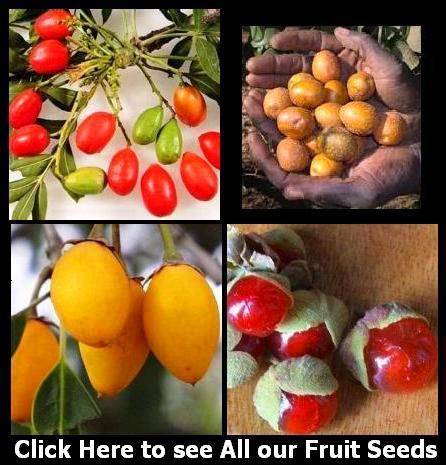  Cornus mas Seeds Cornus mas Seeds
Common Names: Cornelian Cherry or European Cornel
 The European Cornel (Cornus mas) is a species of dogwood native to southern Europe and southwest Asia. In North America, the plant is known by the common name of Cornelian Cherry. It is a medium to large deciduous shrub or small tree growing to 5–12 m tall, with dark brown branches and greenish twigs. The leaves are opposite, 4–10 cm long and 2–4 cm broad, with an ovate to oblong shape and an entire margin. The flowers are small (5–10 mm diameter), with four yellow petals, produced in clusters of 10–25 together in the late winter, well before the leaves appear. The fruit is an oblong red drupe 2 cm long and 1.5 cm in diameter, containing a single seed.  The fruit is edible, but the unripe fruit is astringent. The fruit only fully ripens after it falls from the tree. When ripe, the fruit is dark ruby red. It has an acidic flavour which is best described as a mixture of cranberry and sour cherry; it is mainly used for making jam, makes an excellent sauce similar to cranberry sauce when pitted and then boiled with sugar and orange, but also can be eaten dried. In Azerbaijan and Armenia, the fruit is used for distilling vodka, while in Albania it is distilled into raki. In Turkey and Iran it is eaten with salt as a snack in summer, and traditionally drunk in a cold drink called kizilcik sherbeti. Cultivars selected for fruit production in the Ukraine have fruit up to 4 cm long. The berries when ripe on the plant bear a resemblance to coffee berries, and ripen in mid to late summer. The species is also grown as an ornamental plant for its late winter flowers, which open earlier than those of forsythia, and, while not as large and vibrant as those of the forsythia, the entire plant can be used for a similar effect in the landscape. The wood of C. mas is extremely dense, and unlike the wood of most other woody plant species, sinks in water. This density makes it valuable for crafting into tool handles, parts for machines, etc. Cornus mas was used from the seventh century B.C. onward by Greek craftsman to construct spears, javelins and bows, the craftsmen considering it far superior to any other wood. The wood's association with weaponry was so well known that the Greek name for it was used as a synonym for "spear" in poetry during the fourth and third centuries B.C. A dye can be produced from its bark and tannin is produced from its leaves. The fruit is edible, but the unripe fruit is astringent. The fruit only fully ripens after it falls from the tree. When ripe, the fruit is dark ruby red. It has an acidic flavour which is best described as a mixture of cranberry and sour cherry; it is mainly used for making jam, makes an excellent sauce similar to cranberry sauce when pitted and then boiled with sugar and orange, but also can be eaten dried. In Azerbaijan and Armenia, the fruit is used for distilling vodka, while in Albania it is distilled into raki. In Turkey and Iran it is eaten with salt as a snack in summer, and traditionally drunk in a cold drink called kizilcik sherbeti. Cultivars selected for fruit production in the Ukraine have fruit up to 4 cm long. The berries when ripe on the plant bear a resemblance to coffee berries, and ripen in mid to late summer. The species is also grown as an ornamental plant for its late winter flowers, which open earlier than those of forsythia, and, while not as large and vibrant as those of the forsythia, the entire plant can be used for a similar effect in the landscape. The wood of C. mas is extremely dense, and unlike the wood of most other woody plant species, sinks in water. This density makes it valuable for crafting into tool handles, parts for machines, etc. Cornus mas was used from the seventh century B.C. onward by Greek craftsman to construct spears, javelins and bows, the craftsmen considering it far superior to any other wood. The wood's association with weaponry was so well known that the Greek name for it was used as a synonym for "spear" in poetry during the fourth and third centuries B.C. A dye can be produced from its bark and tannin is produced from its leaves.
You're buying a pack of 5 Seeds 
We'll supply you with all the germination & care instructions. 
 |

